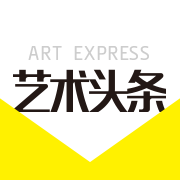
Mahjong: Contemporary Chinese Art from the Sigg Collection
2008-06-24 11:10:42 未知
Coming this fall to BAM/PFA, the landmark exhibition Mahjong: Contemporary Chinese Art from the Sigg Collection offers a unique window onto the past four decades of art and culture in China. Presenting approximately 120 works by more than ninety artists, the exhibition reveals both the myriad changes in Chinese art and the extraordinary transformations in Chinese society that have taken place in the last forty years.
Mahjong is drawn from the collection of Uli Sigg, a Swiss collector whose longstanding ties to China have enabled him to build a collection of unrivaled quality, size, and scope. Filling nine of BAM’s ten galleries with a selection of exceptional paintings, drawings, sculptures, photographs, video works, and installations, Mahjong represents the first time that a significant number of works from the Sigg Collection have been seen in the Americas. Previous versions of the exhibition have been on view in Bern, Switzerland; Hamburg, Germany; Salzburg, Austria; and Barcelona, Spain. Its presentation at BAM/PFA is coordinated by Julia M. White, senior curator of Asian art, and co-curated by White and Lucinda Barnes, chief curator and director of programs and collections.

Huang Yan: Chinese Landscape: Tattoo No. 2, 1999; color photograph; 19 x 24 in.; courtesy of Sigg Collection.
The survey begins in the 1970s, with examples of the socialist realism favored during the Cultural Revolution. It moves on to illustrate the avant-garde movements of the 1980s and early 1990s, and also includes works by a generation of artists who have emerged following China’s social and political reforms of the past decade. Many of the works focus on Mao—depicted in a more familiar than awe-inspiring light—or the Cultural Revolution, as well as, somewhat later, Tiananmen Square. Others take on the rise of consumerism, the increasingly stark contrast between the urban and the rural, and the tensions between social unity and individual expression.
All of these major developments in Chinese art are represented in the exhibition by pivotal works. Featured artists include Ai Weiwei, Huang Yan, Liu Wei, Liu Xiaodong, Wang Du, Weng Fen, Xu Bing, Yue Minjun, Zhang Huan, and Zhang Xiaogang, as well as a number of artists still largely unknown outside of China.
The Berkeley showing of Mahjong is complemented by an important new publication, Mahjong: Art, Film, and Change in China, as well as major public programs and film series. Programs will include Uli Sigg and Orville Schell, former dean of the UC Berkeley School of Journalism, discussing art and politics in China; author Peter Hessler in conversation with historian and Great Wall authority David Spindler; and critic and curator Hou Hanru talking with avant-garde artist Ou Ning, moderated by art historian Jane DeBevoise. Also in conjunction with the exhibition, BAM/PFA will host a residency by artist, writer, and architect Ai Weiwei on the UC Berkeley campus. Film presentations at the Pacific Film Archive will include a retrospective of the films of Jia Zhangke, a major figure in international cinema and one of the preeminent chroniclers of China as it has moved into the twenty-first-century global economy. Watch for details on all of these programs, as well as in-depth information on the gallery exhibition.
(责任编辑:李丹丹)
注:本站上发表的所有内容,均为原作者的观点,不代表雅昌艺术网的立场,也不代表雅昌艺术网的价值判断。
 阿拉里奥画廊上海转型:为何要成为策展式艺术商业综合体?
阿拉里奥画廊上海转型:为何要成为策展式艺术商业综合体? 吕晓:北京画院两个中心十年 跨学科带来齐白石研究新突破
吕晓:北京画院两个中心十年 跨学科带来齐白石研究新突破 翟莫梵:绘画少年的广阔天空
翟莫梵:绘画少年的广阔天空 “纤维”提问2022:存在何“缓”?
“纤维”提问2022:存在何“缓”?
全部评论 (0)